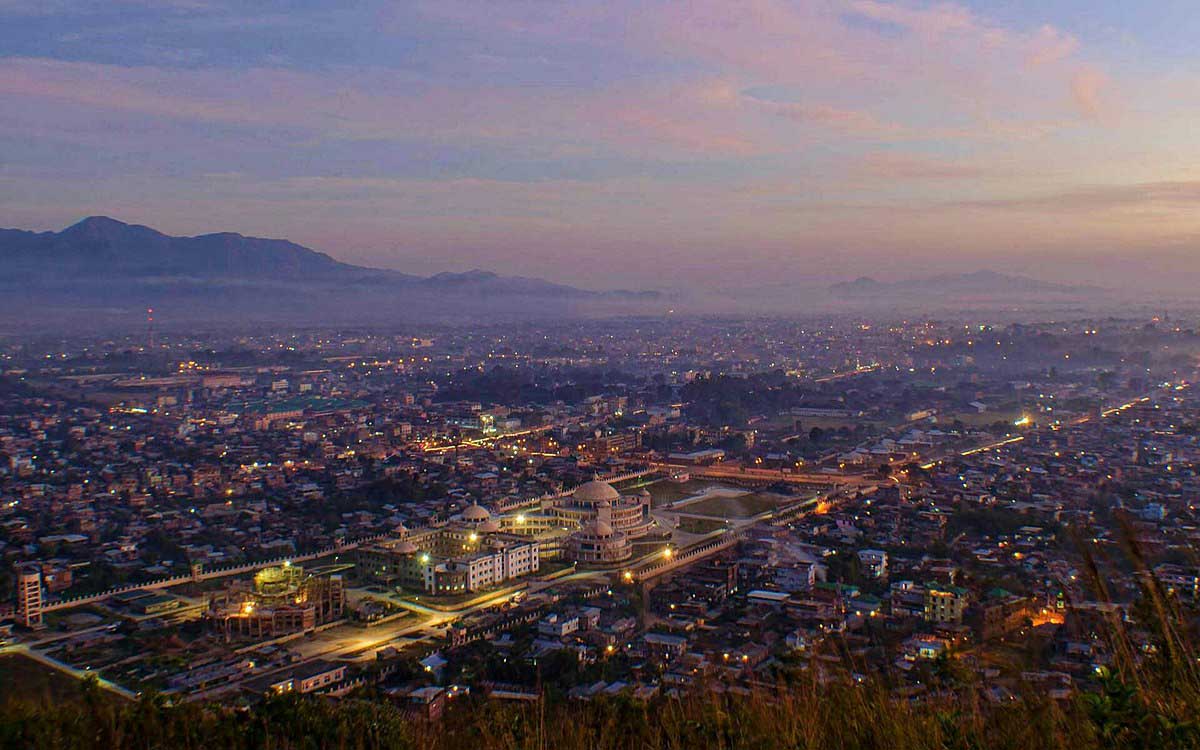This is becoming increasingly a nagging problem yet the authorities are not paying it the attention it deserves. The government needs to be reminded again of this pressing need. It may not command the passion as many of the emotive issues political parties in contentions are flagging as their pet projects now, of the many civil societies and interest groups are likely to take up as their cause, but this is one which would do immense good to make Imphal fit and ready for the future. This especially so when Imphal is among the cities earmarked to be made a smart city. Imphal needs to be remapped and recalibrated to update its postal addresses.
The trouble with cities always have been is that they grow faster than their image. The great American architect, Frank Lloyd Wright, anticipated this when he advised home builders to go as far away from the city as they can, and when they think the have gone far enough, to go five miles more, for the city would be upon them sooner than they imagine. Wright’s advice comes from someone who adores the idyllic but there can be no doubt about it that there are also many who love the hustle bustle of life in cities that never sleep. We are witnessing this exponential growth in Imphal too.
Forty years ago, practically everybody knew each other; the number of cars on the streets could be counted on the fingers on any given day; the most popular vehicle was the bicycle and indeed as many visiting writers were fond of characterising the place, Imphal literally swarmed with bicycles during office going and returning hours; a lot many more loved and managed on foot; restaurants were few and their menus differed little; roads were narrow but they were adequate; fatal road accidents were literally unheard of; people had much less money to spend, but there were no less content than now. Life in short, was slow and idyllic, perhaps even rustic. Quite naturally, to grandparents of forty years ago, even that pace appeared break necks and their stories of their younger days appeared to children of the time to be a strange era where everybody was on foot and a few on bullock carts. Almost everybody was a farmer, and besides that, also basket makers, carpenters, plumbers, cattle herder, poultry keeper etc.
Times have always been changing, but the acceleration at which the pace of this change has been happening (remember the confounding “per second per second” measure we learnt in high school maths) has jumped many folds in the last one decade or so. In physical terms, Imphal is no longer the same city. Most of the familiar landmarks have disappeared. The famed mango tree at Keishampat, the mounds, the ponds, the crooked bunyan tree, the weeded moat, and many more such coordinates are no longer existent. In their places are an ever increasing number of buildings. Spacious homesteads with lawns and gardens that once were common have all been split amongst several generations of siblings, making the old images of these places unrecognizable.
Yet, memories of the old world linger on and this is nowhere more evident than in the manner Imphal postal addresses are organised. They still depend on the old, broad coordinates around these vanishing landmarks. This may still be somewhat okay for local residents and local postmen can still locate addresses of residents specified only by these old landmarks. But as the economy gets more sophisticated, constantly mobile professional classes, such as company executives, bank staff etc., who are transferred to the city and take up temporary accommodations in multi-flat buildings would virtually have no tangible postal address. They have to use “care of” appendages, but it is no longer uncommon for local house-owners to rent out their houses while they themselves are away in other cities and states according to the needs of their own professional callings.
The moot point is, Imphal city planners must think of remapping the city so that every square meter of the city will have a scientific and easily locatable coordinates. Scientifically calibrated house numbers, street names, lane numbers, crossroads, junctions, sub post office pin codes, etc., must be made mandatory now. No doubt, those trained for this mapping job will know which calibrating system will be most effective for an unplanned city like Imphal, and they must be put to the job. To quote Frank Lloyd Wright again, an architect must necessarily be a poet, but equally he or she must be a visionary capable of seeing at least ten years ahead.
If these qualities are not there in the person, he should not call himself an architect. The way Imphal has been allowed to grow in the past few decades is a loud testimony that planning of the city was in the hands of politicians, bureaucrats, technocrats and architects, who care little for these qualities. Look at the way the drainage system has disappeared; look at the way most of the lanes in the city are hardly the width of a motorcar; look at the missing pedestrian pavements on its roads and the list can go on.
Forty years ago probably these attributes were not necessary. But it must be said what was needed then were never missing. For instance, on either side of all roads, there were huge drains that we locally knew as “khongban”. These have been gobbled up by land greed and the city authorities have made little or no effort to think of their replacement. This unpreparedness to meet the challenges of the time is also stark in the manner in which Imphal postal addresses are organised. Things are bad, but not too late for the authorities to wake up and do something.












